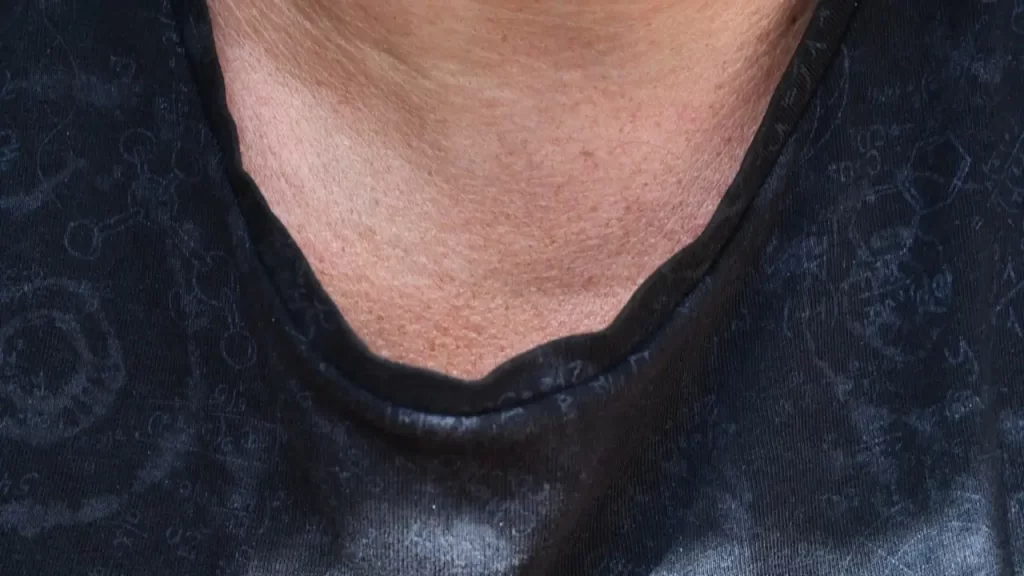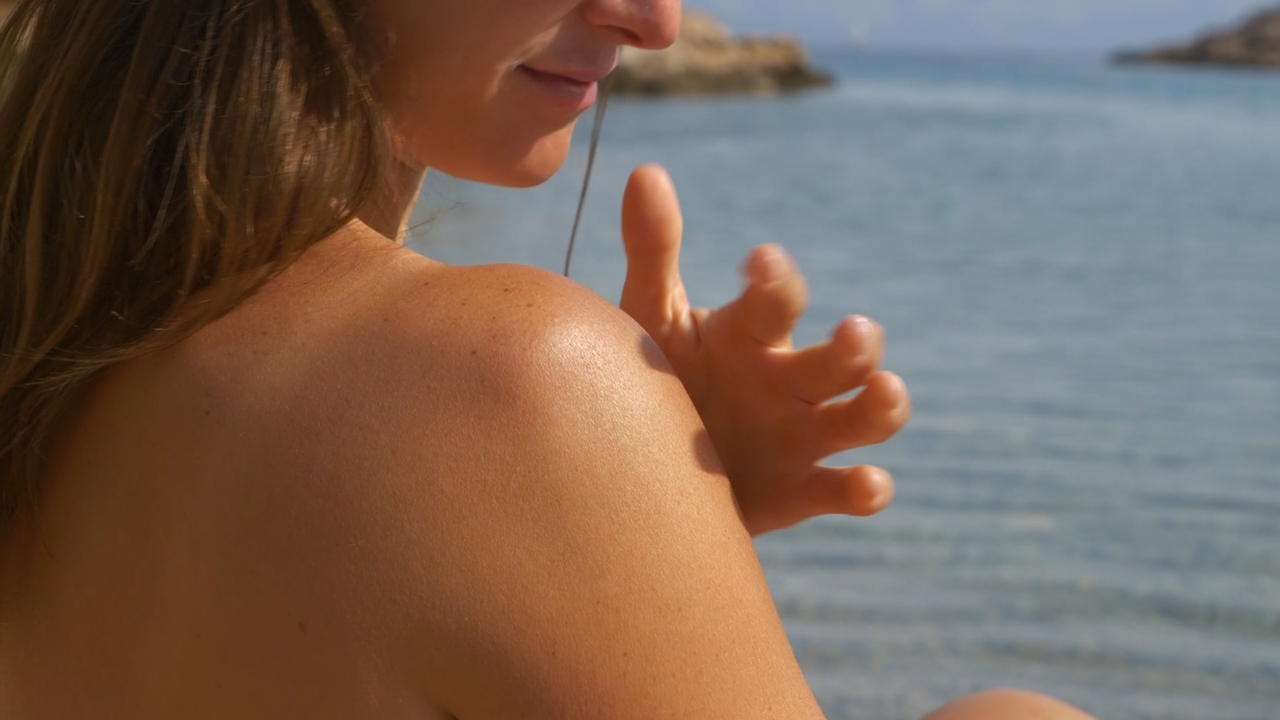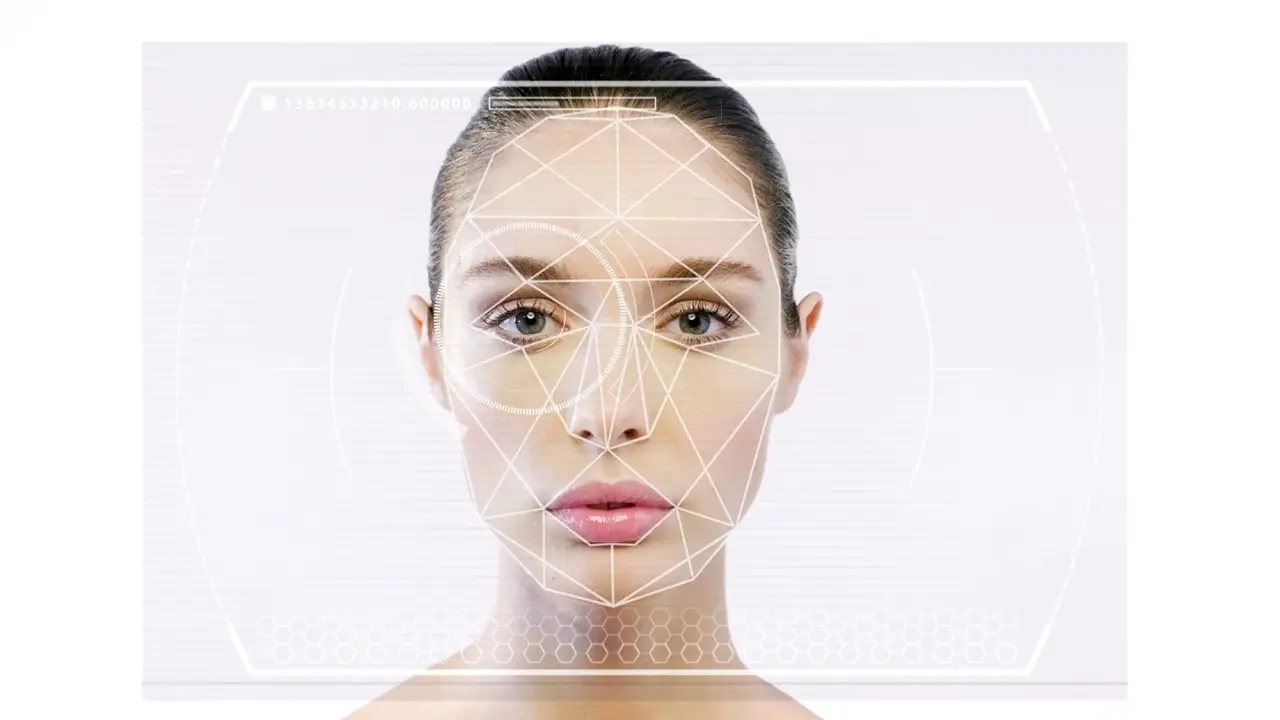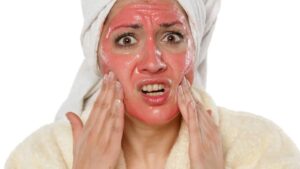Although sunlight is a problem for every skin type, but it troubles women with sensitive skin tone more and causes allergies.

The rainy season is about to come. This will bring some coolness in the weather, but the scorching sun is not going to leave you so easily.
It is possible that like everyone else, you also apply a little sunscreen and go out in the sun with only a scarf or umbrella, due to which you have to face the problem of tanning.
But for women who have sensitive skin, this sun can cause many problems, such as irritation, redness, itching, rashes and allergies. This allergy can put the skin in trouble.
What is Sun Allergy?
Allergy to sun, also known as solar urticaria, is a condition in which the skin has an allergic reaction when exposed to the rays of the sun. This is a rare skin disease, which is more common in women than men. Polymorphous light eruption (PMLE) is also another skin related disease. These are a type of rash that affects those parts of the body that are exposed to sunlight for a longer time during the day, such as the neck, hands, chest or some parts of the back.

Solar Urticaria
Solar urticaria is a rare allergic reaction to sun exposure. When the skin is exposed to sunlight, it can cause an itchy rash or hives. Here are some key points:
- Symptoms: The reaction can occur within minutes of sun exposure and includes symptoms like redness, itching, pain, and hives. In severe cases, it can lead to more serious symptoms like headache, fatigue, nausea, and changes in heart rate.
- Causes: The exact cause is not well understood, but it is believed to be an immune system reaction where the body mistakenly identifies sun-affected cells as harmful, triggering a histamine response.
- Prevalence: It is more common in women than men and typically develops in adults in their mid-30s. It is very rare, with only about 650 cases described worldwide.
- Management: There is no cure, so managing the condition involves avoiding sun exposure, wearing protective clothing, and using sunscreen.
Polymorphous Light Eruption (PMLE)
Polymorphous light eruption (PMLE) is another skin condition triggered by sun exposure. It is characterized by a rash that appears on sun-exposed areas of the body. Here are some details:
- Symptoms: PMLE typically presents as red, itchy bumps or patches on the skin. It commonly affects areas like the neck, hands, chest, and back that are exposed to sunlight for extended periods.
- Causes: The exact cause of PMLE is also not fully understood, but it is thought to be an abnormal reaction to UV light. Unlike solar urticaria, PMLE is more common and can affect people of all ages.
- Management: Preventive measures include limiting sun exposure, using broad-spectrum sunscreens, and wearing protective clothing. In some cases, doctors may prescribe medications to manage symptoms.
Both conditions highlight the importance of protecting your skin from excessive sun exposure. If you or someone you know experiences these symptoms, it’s best to consult a healthcare professional for proper diagnosis and management.
Do you have any specific questions about these conditions or need advice on managing sun exposure?
Know the Symptoms
If you feel itching on the skin when the sun comes out, then these can be symptoms of allergy. Sometimes redness and rashes start appearing on the skin in the sun, as well as burning, stinging and swelling in the skin. In this situation, you should immediately contact a dermatologist. Many times headache, nausea and fatigue are felt before allergy occurs. In severe cases, difficulty in breathing and dizziness can also occur.
Let’s delve into the symptoms of sun allergies and what actions to take if you experience them:
Recognizing the Symptoms of Sun Allergy
- Itching: One of the earliest signs of a sun allergy is itching on the skin when exposed to sunlight. This can be an immediate reaction or develop after some time in the sun.
- Redness and Rashes: The skin may become red and develop rashes. These rashes can vary in appearance, from small bumps to larger, raised patches. They often appear on areas of the skin that are directly exposed to the sun, such as the face, neck, hands, and arms.
- Burning and Stinging: A burning or stinging sensation on the skin is another common symptom. This discomfort can range from mild to severe, depending on the extent of sun exposure and individual sensitivity.
- Swelling: Swelling, or edema, can occur in the affected areas. This is due to the body’s inflammatory response to the sun’s UV rays.
- Headache, Nausea, and Fatigue: Before the visible symptoms appear, some people might experience systemic symptoms like headache, nausea, and fatigue. These symptoms can be a precursor to the skin reactions and indicate that the body is reacting to sun exposure.
- Severe Symptoms: In more severe cases, sun allergies can lead to difficulty in breathing and dizziness. These symptoms require immediate medical attention as they can indicate a serious allergic reaction.
What to Do If You Experience These Symptoms
- Contact a Dermatologist: If you notice any of these symptoms, especially if they are severe or persistent, it’s important to consult a dermatologist. They can provide a proper diagnosis and recommend appropriate treatments.
- Avoid Further Sun Exposure: Try to stay out of the sun as much as possible until you can see a doctor. Wear protective clothing, such as long sleeves and hats, and use a broad-spectrum sunscreen with a high SPF.
- Cool the Skin: Applying cool compresses or taking cool baths can help soothe the skin and reduce itching and swelling.
- Medications: Over-the-counter antihistamines can help relieve itching and swelling. In some cases, a doctor may prescribe stronger medications or topical treatments to manage the symptoms.
Preventive Measures
- Use Sunscreen: Apply a broad-spectrum sunscreen with at least SPF 30 every day, even on cloudy days. Reapply every two hours and after swimming or sweating.
- Wear Protective Clothing: Long sleeves, wide-brimmed hats, and sunglasses can help protect your skin from the sun’s rays.
- Seek Shade: Whenever possible, stay in the shade, especially during peak sun hours (10 a.m. to 4 p.m.).
- Gradual Exposure: If you are prone to sun allergies, gradually increase your sun exposure to help your skin build tolerance.
If you have any more questions or need further advice on managing sun allergies, feel free to ask!
How to Prevent
Using sunscreen can help you in this, so apply sunscreen before going out in the sun. To avoid the sun, wear a hat, scarf and sunglasses. These will protect your skin from the rays of the sun. Along with this, keep the body hydrated in summer. Avoid going out in bright sunlight, especially in the afternoon, because at that time the UV rays are strongest, which increases the chances of skin disease. If you see serious symptoms of sun allergy, contact a dermatologist immediately.

Here are detailed steps on how to prevent sun allergies and protect your skin from harmful UV rays:
Preventive Measures for Sun Allergies
1. Use Sunscreen:
Choose the Right Sunscreen: Select a broad-spectrum sunscreen with at least SPF 30. Broad-spectrum sunscreens protect against both UVA and UVB rays.
Apply Properly: Apply sunscreen generously to all exposed skin at least 15-30 minutes before going outside. Don’t forget areas like the ears, back of the neck, and tops of the feet.
Reapply Regularly: Reapply every two hours, or more often if you’re swimming or sweating. Even water-resistant sunscreens need to be reapplied after swimming or heavy sweating.
2. Wear Protective Clothing:
Hats: Wear a wide-brimmed hat to protect your face, neck, and ears from direct sunlight.
Scarves and Long Sleeves: Use lightweight, long-sleeved shirts and scarves to cover your skin. Fabrics with a tight weave offer better protection.
Sunglasses: Protect your eyes and the sensitive skin around them by wearing sunglasses that block 100% of UVA and UVB rays.
3. Stay Hydrated:
Drink Plenty of Water: Keeping your body hydrated helps maintain healthy skin and can reduce the risk of heat-related illnesses.
Eat Hydrating Foods: Include fruits and vegetables with high water content, such as watermelon, cucumbers, and oranges, in your diet.
4. Avoid Peak Sun Hours:
Timing: Try to stay indoors or in the shade during peak sun hours, typically between 10 a.m. and 4 p.m., when UV rays are the strongest.
Plan Activities: Schedule outdoor activities for early morning or late afternoon to minimize sun exposure.
5. Seek Shade:
Use Umbrellas and Shade Structures: When outdoors, use umbrellas, canopies, or other shade structures to reduce direct sun exposure.
Natural Shade: Take advantage of natural shade from trees and buildings whenever possible.
6. Monitor Symptoms:
Be Vigilant: Pay attention to any signs of sun allergy, such as itching, redness, rashes, burning, or swelling.
Seek Medical Advice: If you experience severe symptoms like difficulty breathing, dizziness, or extensive skin reactions, contact a dermatologist immediately.
By following these preventive measures, you can significantly reduce the risk of sun allergies and protect your skin from the harmful effects of UV radiation. If you have any more questions or need further advice, feel free to ask!
Some Home Remedies
Aloe vera gel provides cooling effect to the skin. Applying its cold compress on the area affected by allergy can reduce swelling and irritation. Along with this, you can also use coconut oil. It helps in moisturizing the skin.

Here are some detailed home remedies that can help soothe and manage sun allergy symptoms:
Aloe Vera Gel
Aloe vera is well-known for its soothing and cooling properties, making it an excellent remedy for sunburn and sun allergies.
- Cooling Effect: Aloe vera gel provides a cooling effect that can help reduce the heat and discomfort caused by sun exposure.
- Application: Apply fresh aloe vera gel directly from the plant or use a store-bought gel. For added relief, you can refrigerate the gel before applying it to the affected areas.
- Benefits: Aloe vera helps to reduce swelling, redness, and irritation. It also promotes healing and moisturizes the skin.
Cold Compress
A cold compress can provide immediate relief from the symptoms of sun allergies.
- How to Use: Soak a clean cloth in cold water or wrap ice cubes in a cloth and apply it to the affected areas.
- Benefits: The cold compress helps to reduce swelling, numb the area to relieve pain, and decrease inflammation.
Coconut Oil
Coconut oil is another effective remedy for soothing sun-damaged skin.
- Moisturizing: Coconut oil is an excellent moisturizer that helps to hydrate and nourish the skin.
- Application: Gently apply a thin layer of coconut oil to the affected areas. It can be used after a cold compress or aloe vera gel application.
- Benefits: Coconut oil helps to lock in moisture, reduce itching, and promote healing. It also has anti-inflammatory properties that can help soothe irritated skin.
Additional Tips
- Oatmeal Baths: Adding colloidal oatmeal to a cool bath can help soothe itchy and inflamed skin. Oatmeal has anti-inflammatory properties and can provide relief from irritation.
- Hydration: Drink plenty of water to keep your body hydrated. Proper hydration helps maintain healthy skin and can aid in the healing process.
- Avoid Scratching: Try to avoid scratching the affected areas, as this can worsen the irritation and potentially lead to infection.
These home remedies can provide relief from the symptoms of sun allergies and help your skin heal. However, if you experience severe symptoms or if the condition persists, it’s important to seek medical advice from a dermatologist.
If you have any more questions or need further advice on managing sun allergies, feel free to ask!
Important Role of Sunscreen
To avoid sun allergy, you should apply sunscreen half an hour before going out and repeat it every two hours. There is no need to wash the face for this. You should use a sunscreen with at least 30 SPF. Sunscreens with 50, 70 SPF above 30 are also good. Apart from this, it is most important to apply adequate amount of sunscreen on the parts of the body that come in direct contact with the sun, such as face, neck, hands or upper part of the back. If you do any outdoor sports activity, you must use sunscreen. This will help you avoid tanning and allergies. Apart from this, it is important that you identify the symptoms of allergies and get them treated on time.

Here’s a detailed explanation on how to effectively use sunscreen to prevent sun allergies and protect your skin:
Using Sunscreen to Prevent Sun Allergy
1. Timing of Application:
Apply Before Going Out: Apply sunscreen at least 30 minutes before you go outside. This allows the sunscreen to fully absorb into your skin and provide maximum protection.
Reapply Regularly: Reapply sunscreen every two hours, or more frequently if you are swimming, sweating, or towel-drying. This ensures continuous protection throughout the day.
2. No Need to Wash Face:
Continuous Protection: There is no need to wash your face before reapplying sunscreen. Simply apply another layer on top of the existing one to maintain protection.
3. Choosing the Right SPF:
Minimum SPF 30: Use a sunscreen with at least SPF 30. This level of SPF blocks about 97% of UVB rays.
Higher SPF Options: Sunscreens with SPF 50, 70, or higher provide even more protection, blocking up to 98-99% of UVB rays. These are especially useful for prolonged outdoor activities or for individuals with very sensitive skin.
4. Adequate Application:
Cover All Exposed Areas: Apply a generous amount of sunscreen to all parts of the body that will be exposed to the sun, including the face, neck, hands, and upper back. Don’t forget areas like the ears and the back of the neck.
Proper Amount: Use about a shot glass (approximately 1 ounce or 30 milliliters) of sunscreen to cover your entire body. For the face alone, a nickel-sized amount is usually sufficient.
5. Outdoor Activities:
Sports and Recreation: If you engage in outdoor sports or activities, it’s crucial to use a water-resistant sunscreen. These sunscreens are designed to stay effective even when you sweat or swim.
Avoiding Tanning and Allergies: Regular use of sunscreen helps prevent tanning and reduces the risk of sun allergies by protecting your skin from harmful UV rays.
6. Identifying and Treating Symptoms:
Recognize Symptoms: Be aware of the symptoms of sun allergies, such as itching, redness, rashes, burning, and swelling. Early recognition can help in managing the condition effectively.
Seek Treatment: If you notice any symptoms of sun allergy, consult a dermatologist promptly. Early treatment can prevent the condition from worsening and provide relief from discomfort.
By following these guidelines, you can effectively protect your skin from sun allergies and other sun-related skin issues. If you have any more questions or need further advice, feel free to ask!




























Thhis article provides clear idea inn ffavor oof thhe nnew iewers oof blogging, thhat truy howw to do blogging.
Wonderful blog! I found it while surfing around on Yahoo News. Do you have any suggestions on how to get listed in Yahoo News? I’ve been trying for a while but I never seem to get there! Thanks
I believe you have noted some very interesting points, appreciate it for the post.
Simply wanna remark that you have a very decent site, I like the design and style it actually stands out.
What i do not realize is in fact how you are no longer actually much more smartly-favored than you might be now. You’re so intelligent. You already know therefore considerably relating to this matter, made me in my opinion imagine it from so many varied angles. Its like men and women aren’t fascinated except it is something to accomplish with Lady gaga! Your personal stuffs outstanding. Always care for it up!
You are my inhalation, I own few web logs and very sporadically run out from to brand : (.
Just a smiling visitant here to share the love (:, btw great layout. “Better by far you should forget and smile than that you should remember and be sad.” by Christina Georgina Rossetti.
Great ?V I should certainly pronounce, impressed with your web site. I had no trouble navigating through all the tabs and related information ended up being truly easy to do to access. I recently found what I hoped for before you know it in the least. Quite unusual. Is likely to appreciate it for those who add forums or something, web site theme . a tones way for your client to communicate. Nice task..
It is really a great and useful piece of information. I am glad that you shared this useful information with us. Please keep us up to date like this. Thank you for sharing.
You are a very smart individual!
I got good info from your blog
For en fremragende skrivejobb! Både grundigheten og klarheten i din analyse er sterkt verdsatt. Dine data var både praktiske og relevante. Dette er en artikkel jeg vil komme tilbake til på et senere tidspunkt. Din kunnskap og innsikt er sterkt verdsatt.